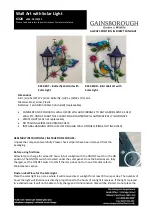
63
9.3 Emergency Plan
The emergency plan shows the elementary steps for a successful companion rescue.
Depending on the situation at hand, the procedure must be adapted.
62
C O M PA N I O N R E S C U E
9. Companion Rescue
Companion rescue means that buried subjects are
located and excavated by members of their party
immediately after the avalanche slide. Avalanche
rescue is a race against time! While most buried
subjects can be rescued within the first 8 minutes,
the chances of survival decrease rapidly after-
wards. Companion rescue, therefore, provides the
greatest chances of survival for a buried subject.
9.1 If an Avalanche Occurs
As a Victim:
• Escape to the side
• Discard skis, snowboards, and poles
➜
anchor effect
• Try to stay on top
• Close your mouth; place your hands in front of
your face
➜
clear airway when the avalanche stops
Separate instructions apply for the use of special-
ized safety equipment, such as the highly efficient
flotation devices.
As a Witness:
• Memorize the last seen point as well as the
direction of the avalanche
➜
signal search strip
(See chapter «Signal Search»).
9.2 Personal Rescue Equipment
Carrying the proper personal safety equipment is
critical for effective companion rescue. A transceiv-
er, a shovel, and a probe pole are necessary to
localize and excavate a buried subject quickly and
efficiently.
Mammut offers a variety of suitable probe poles
and shovels.
The use of a flotation device (airbag system) signifi-
cantly reduces the risk to be completely buried and
therefore leads to considerably higher survival
chances.
Carrying a radio or a mobile phone to call for help is
highly recommended.
The use of the transceiver precedes the use of the
probe pole and the use of the probe pole precedes the
use of the shovel.
• Pinpointing (probing)
• Mark
• Excavate
Checklist for
companion rescue
Tone-Only mode
instructions
(without display)
Fine search
Coarse search
Signal search:
Search pattern for
multiple rescuers
Search pattern
for
one rescuer







































